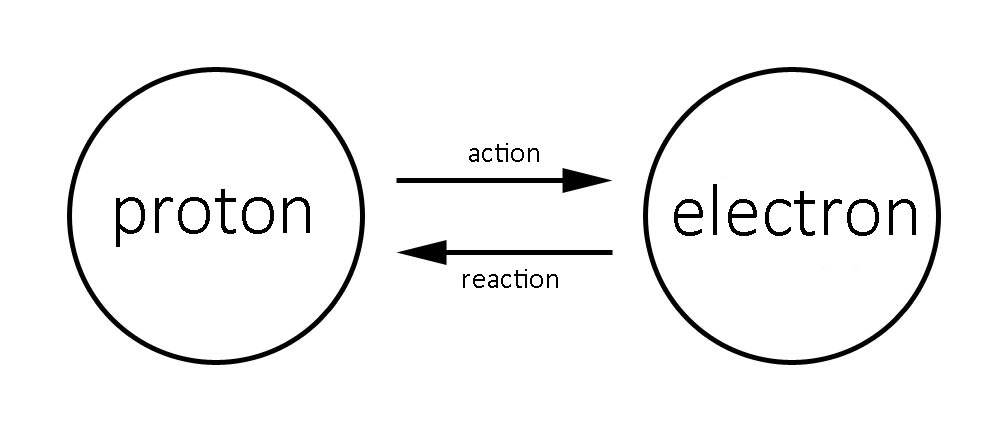
This is a brief detour into something that must have happened at a certain point in human development. This will touch briefly on the field of semiotics, or the study of sign-making.
For the first several billion years of the universe's existence, there was only one type of interaction between two things: action-reaction. Since this is simply a two-way interaction, in semiotics it is called a dyadic interaction.

At some point about 3.5 billion years ago, life emerged on the Earth. Scientists do not know how this took place. Living organisms still respond to their environments in a dyadic way, but through more active interactions called stimulus-response.

Many seemingly complex patterns of behavior are reducible to dyadic relationships. A mouse might smell a treat (stimulus), seeking it out (response), encounter an obstacle like a maze that prevents it from carrying out this response (new stimulus), and learn its way through the maze (new response) in order to complete the original response.

Some very advanced organisms developed methods of communication by which they could interact with other organisms in more complicated ways, be it vocally, visually, electrochemically, etc. This type of communication is also reducible to a series of dyadic interactions. The stimulus may prompt one organism to emit some kind of call (a "signal"), with other organisms responding not to the original stimulus, but to the call as a new stimulus.

As living organisms, human beings arrived on the scene quite capable of dyadic stimulus-response interactions.

However, a new type of interaction originated that seems unique to human beings (although is not necessarily so.) Human beings can conceptualize their environment, interacting with it indirectly through the medium of signs and symbols, such as spoken or written language, which represent or signify something else. The shapes of the letters or the sound of the word "FOOD" have nothing intrinsically to do with food itself, and yet a human being is interacting with a real feature of the environment when the word "FOOD" causes him to consider food. It is also noteworthy that the linguistic symbol can represent not only specific objects in the environment (say, the apple in your lunch box), but abstractions which are certainly real but have no specific physical counterpart in the universe (such as food considered as a genus, which includes all food past, present, future, or possible.)

This type of interaction cannot be expresed as a series of dyadic interactions, however complex. The use of a symbol to represent a concept has created an irreducible triadic interaction. It allows the user to interact not only with specific objects in the environment, but with concepts, categories, numbers, and other abstract realities, to which objects and organisms capable of only dyadic interactions have no access.
Importantly, triadic interactions are inherently social. The existence of a sign or symbol begins with a physical object, the concept of which is abstracted by a sign-user and then expressed symbolically through language, but it also implies another sign-user who interprets the symbol. This type of communication gives sign-users access to each other's inner thoughts, allowing them to move beyond communication to expression and understanding.

As triadic interaction deals with apparently non-physical realities such as concepts and abstractions, physical science offers no clear explanation of how this leap could have been taken. Nevertheless, it is perhaps the most significant moment in human development, as triadic thinking is prerequisite for any human activity endowed with any sort of meaning, including not only language but mathematics, art, science, religion, architecture, literature, fashion, poetry, and music.